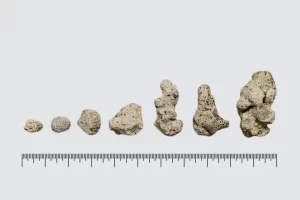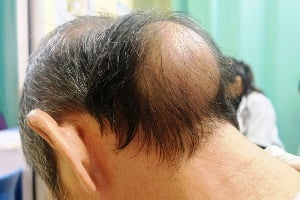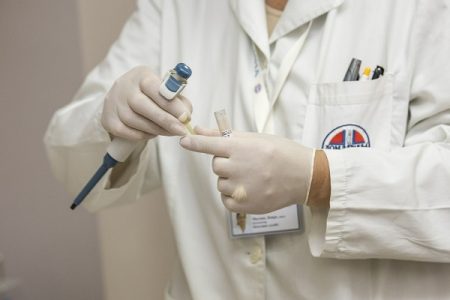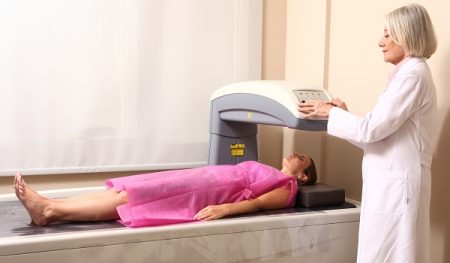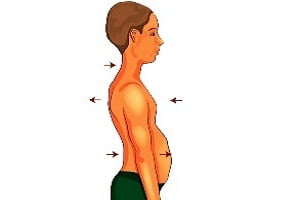What is a Rickets Disease?
Rickets is a condition that affects bone development in children. It is a disorder that affects the skeleton making the bones weak and soft. Weak and soft bones lead to stunted growth and skeleton deformities.
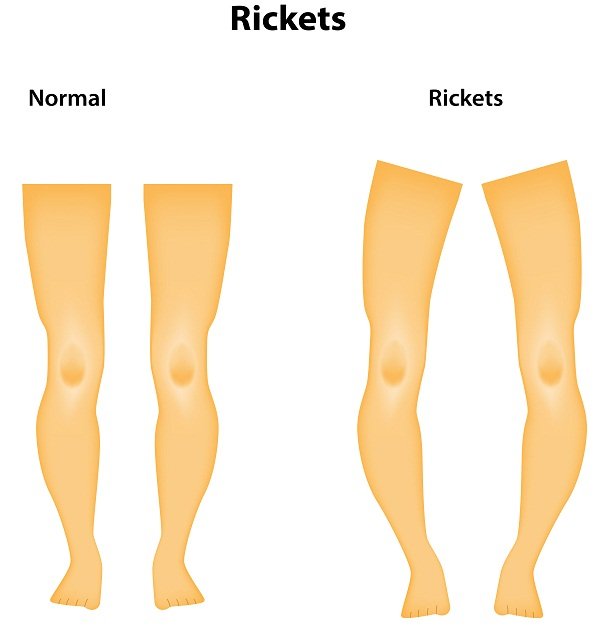
Rickets is caused by a severe and prolonged deficiency of vitamin D. Deficiency of vitamin D leads to a deficiency of calcium and phosphate because vitamin D promotes the absorption of calcium and phosphorous from the gastrointestinal tract. These nutrients are vital for the development of healthy and strong bones. If vitamin D is deficient then levels of calcium and phosphorous are also less in bones. This situation gives rise to rickets.
Occurrence of rickets in children
Rickets is an extremely rare disease. In India, fewer than 5 thousand cases are seen per year. Rickets is more common during the growing stage of children like between the ages of 3 to 18 months.
Signs and symptoms of rickets
Rickets causes the bone become weak, soft and painful. Every symptom differs in severity. Signs and symptoms of rickets may include the following:
- Fussy and irritated babies
- Soft skull (craniotabes) in young babies
- Infants and toddlers have difficulty walking
- Development issues like late crawling and walking
- Abnormal physical growth (height and weight may be affected)
- Older children may have bone pain, bone tenderness and brittle bones
- Older children may have knock knees (genu valgum)
- Costochondral swelling (swelling of specific cartilages)
- A horizontal line visible on the chest called Harrison’s grove
- Hypocalcemia (Low calcium blood levels)
- Spinal, pelvic and cranial deformities
- Uncontrolled muscle spasms affecting the entire body
- Swelling of the wrists, knees and ankles because the ends of the bones are widening
- Late teething and teeth deformities like cavities, abscesses and holes in the enamel
Causes of rickets
Rickets is mainly caused by the following conditions:
Lack of vitamin D (vitamin d deficiency in children, infants and babies)
Vitamin D is the essential nutrient required by the body for strong and healthy bones. It also helps the body to absorb calcium from the intestines. If the body does not have enough vitamin D, it will face a deficiency of calcium which can lead to hypocalcemia (low levels of calcium in the blood). Hypocalcemia results in weak and brittle bones and teeth. Neuromuscular (nerve and muscle) problems are also caused due to low levels of calcium. Therefore, including vitamin D in the diet is very important.
What are the sources of Vitamin D?
The sources of vitamin D include:
Sun
Sun has an abundance amount of vitamin D. Ultraviolet light from the sun helps our skin cells to convert inactive vitamin D to an active state.
Diet
Vitamin D deficiency can be easily improved by making certain changes in the diet. Adding vitamin D to a diet is relatively simple. Foods rich in vitamin D are:
- eggs
- fish oils
- some fortified milk and juices
- some oily fishes like salmon
- Soy milk products
Genetic defect
Some rare forms of rickets also occur due to genetic disorders. One of them is hypophosphatemic rickets. It is a rare genetic fault that prevents the kidneys from processing phosphates. Less phosphate in the blood leads to weak and soft bones.
Certain diseases
Some diseases related to kidney, liver and intestines can interfere with the way the body absorbs and metabolizes minerals and vitamins, resulting in rickets. Some examples of such diseases include:
- Celiac disease (immune reaction to eating gluten)
- Inflammatory bowel disease (digestive tract inflammation)
- Cystic fibrosis (disorder that damages the lungs and digestive system)
- Kidney problems (kidneys fail to maintain proper levels of calcium and phosphorus in the blood)
Risk factors of rickets
Certain factors increase a child’s risk of getting rickets. These factors include:
Dark skin
Dark skin reacts less strongly to sunshine than fair skin, producing less vitamin D. This makes children with dark skin more prone to developing rickets.
Vitamin D deficiency in pregnant mothers
If a mother is vitamin D deficient during pregnancy, the child can be born with rickets or may develop the disease within a few months after birth.
Regions with less sunlight
Children who live in less sunshine geographical locations are at higher risk of developing rickets due to vitamin D deficiency.
Premature birth
Babies born before their due dates are always at risk of developing diseases including rickets.
Medications
Certain types of medications may interfere with the body’s ability to use vitamin D, increasing the chances of the disease. Examples of such medications are anti-seizure medications and antiretroviral medications that are used to treat HIV infections.
Exclusive breastfeeding
Babies who are breastfeed exclusively especially beyond 6 months are more prone to develop rickets because:
- Human milk does not contain enough vitamin D to meet the needs of the growing baby.
- The mother may not get enough exposure to sunlight.
- The mother’s diet may not contain enough vitamin D or calcium.
Babies who are exclusively breastfed should receive vitamin D drops for that period.
Poverty (Lack of nutrition)
Some children may not get adequate nutrition because of poverty. Lack of nutrition is one of the reasons that such children are at risk of developing rickets.
Malnutrition
Children in areas of natural calamities like severe droughts and starvation are at high risk of developing rickets.
Diagnosis of rickets
The diagnosis of rickets is done in the following ways:
Physical examination
The first step in the diagnosis of rickets is complete physical examination along with comprehensive medical history. During the physical exam, the doctor physically analyzes the symptoms of the disease. He or she may gently press on child’s bones like skull, legs, chest, wrists and ankles for checking any abnormalities if present.
Blood tests
Blood tests are done to measure levels of calcium and phosphorus in the blood.
Arterial blood gases
Blood gases are a measurement of the acidity (pH) of the blood. This test measures the amount of oxygen and carbon dioxide in your blood.
X-rays
X-ray of bone is the imaging test to analyze the bone condition. This test shows calcium loss in bones if any and alterations in the structure and shape of the bones.
Bone biopsy
A bone biopsy is done in very rare cases. In a bone biopsy, a piece of bone or bone marrow is taken and is examined for the physical symptoms like bowed legs or soft skull. The test is done in the following way:
- An X-ray, CT or MRI scan is used to place the biopsy instrument in correct position and place.
- Local anesthesia is applied to the area.
- A small cut is then made in the skin and a drilling needle is gently inserted through the cut, then pushed and twisted into the bone.
- Once the sample is obtained, the needle is removed.
- Stitches are applied on the cut and covered with a bandage.
- The sample taken is sent to a lab for examination.
Other tests
There are some other tests that are done to further confirm the disease:
PTH
PTH stands for parathyroid hormone that is released by the parathyroid gland. The aim of this test is to measure the amount of PTH in blood.
Urine calcium
This test is done to measure the amount of calcium present in urine.
Treatment of rickets in children: Can rickets be cured?
The treatment of rickets focuses on improving the intake of vitamin D, calcium and phosphorous. It can be achieved by following certain things such as:
Exposure to sunlight
Vitamin D is produced naturally in child’s body when bare skin is exposed to sunlight. It is the best method of getting vitamin D and reducing the deficit.
Diet
In order to treat the disease, one should keep in mind that the child’s diet should have good nutritional value. The diet should be rich in vitamin D, calcium and phosphorous. The nutritional and healthy diet will remove the deficiency of these nutrients. The main food sources of these nutrients are given below.
Foods rich in vitamin D are:
- Fatty fish like salmon
- Beef liver
- Cheese
- Egg yolk
- Mushrooms
- Raw milk
- Vitamin D fortified foods like orange juice, soy milk and cereals
Foods rich in calcium are:
- Spinach
- Kale
- Okra
- Collards
- Almonds
- Oranges
- Soybeans
- Sesame seeds
- White beans
- Some fish, like salmon and perch
- Calcium-fortified foods such as some orange juice, oatmeal, and breakfast cereal
Foods rich in phosphorus are:
- Baby soybeans
- Cooked potato with skin
- Raw mushrooms
- Grains like wheat bran and rice bran
- Cereals like bran flakes and oatmeal
- Processed cheese
- Yogurt
- Buttermilk
- Soy beverages
- Fish and meat
Supplements
When the levels of calcium, vitamin D and phosphorous are not enough in the diet, doctors recommend taking supplements. The daily intake of these nutrients for a child is:
- Vitamin D – 10 mcg (micrograms) per day
- Calcium – 800 mg (milligrams) per day
- Phosphorous – 405 mg (milligrams) per day
Treatment of other medical conditions
If rickets is developed due to any other underlying medical condition such as kidney disease or celiac disease, then the disease needs to be treated and controlled first. The controlled underlying disease makes the treatment of rickets easy.
Surgery and other procedures
Some deformities of the skeleton may require surgery. But this method of treatment is the last option. Positioning or bracing may be used to reduce the deformities.
Prevention of rickets
There are several steps that can be taken to help prevent rickets:
- Ensure that the child consumes a healthy and balanced diet containing vitamin D, calcium and phosphorous in right quantities.
- Encourage the child to spend some time outside in the sun.
- Supplement of vitamin D, calcium and phosphorous should be given to the child according to the quantity best suited.
Complications due to rickets
- If left untreated, a child with rickets is more prone to fractures of the bone because rickets makes the bone brittle and weak.
- If the rickets is severe and prolonged, there may be permanent bone and skeleton deformities.
- Children with rickets may suffer from delayed and stunted growth.
- Severely low blood calcium levels can lead to cramps, seizures and breathing problems.
- Rickets may give rise to chronic skeleton pain.
- Children with rickets may also suffer from dental defects.
